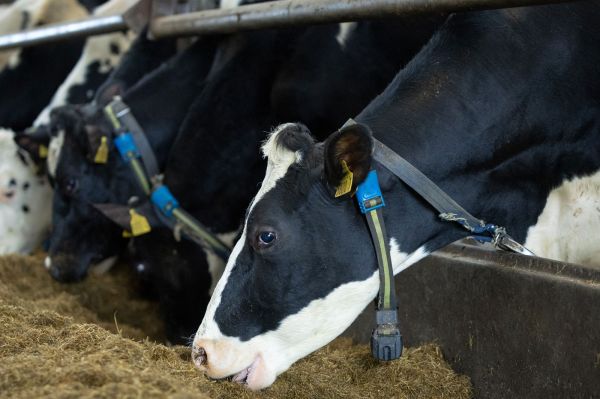Preparing the dry cow for calving

Nutrition is of paramount importance during the dry period. The ideal body condition score (BCS) for dairy cows pre-calving is 3-3.25. Cows that are over-conditioned in the pre-calving period are more likely to succumb to metabolic diseases such as fatty liver disease and ketosis in early lactation. Fatty liver disease and ketosis increase the likelihood of developing a displaced abomasum, otherwise known as a twisted stomach; mastitis; and metritis, otherwise known as a uterine infection. Conversely, cows that are too thin post-calving may struggle to go back in calf and may have reduced milk yields. Ensure that all dry cows have adequate feed space, watch out for bullying and avoid any sudden changes in diet during the dry period. Assess rumen fill scores regularly to quickly identify any cows that may be off-feed or under consuming. Lame cows may consume less than their comrades. Hoof care is worth spending time on before the dry period for this reason.
Your veterinary practitioner can assess the nutritional suitability of your current dry-cow diet, with any known weak points from previous years in mind. If milk fever has historically been an issue on farm at calving, for example, examination of the mineral content of the dry cow diet is warranted. Paradoxically, an oversupply of calcium during the dry period can exacerbate milk fever at, and shortly after, calving time. The goal is to keep the cow’s calcium mechanisms sharp by restricting calcium supply in the dry period. This is then followed by a correctly increased supply after calving to match the sudden demand lactation brings. Milk fever can also give rise to other metabolic conditions.
Dry-period infections
Many new intramammary infections – mastitis cases – are established in the dry period but only manifest as clinical disease after calving. The first phase of the dry period is known as the involution phase. During the involution phase, the udder attempts to form keratin plugs to seal the teats and protect the udder from infection setting in. Unfortunately, many cows do not form effective natural seals, meaning that the udder is left vulnerable to infection. Using a dependable teat sealant at the point of dry-off provides the teat with a more resilient barrier to infection, lessening the likelihood of clinical
mastitis, post-calving. Dry-cow antibiotic therapy should always be planned in detail with your veterinary practitioner.
Colostrum
After involution, there is a steady state followed by colostrogenesis (colostrum formation). Colostrum (beastings) is well-known to be an invaluable source of nutrition and immunity for the newborn calf. The quality of colostrum, unsurprisingly, can be affected by dry-period factors such as nutrition, stress, dry-period length, and subclinical mastitis. With the calf being the future of the herd, colostrum quality should be closely monitored. Colostrum quality can be quickly assessed on farm using a Brix refractometer, with a target of above 22 per cent being optimal.
Scour
Calf scour is the most frequent cause of death in calves under one month of age. Common causes of calf scour include rotavirus, coronavirus and Escherichia coli. Colostrum quality can be improved through cow vaccination with a calf-scour vaccine.
Products
Bovilis Rotavec Corona is a suitable vaccine for this. By vaccinating cows once in the three-month to three-week period prior to calving with this product, for example, antibodies are produced against rotavirus, coronavirus, and E. coli. These antibodies are passed from cow to calf through colostrum feeding, protecting the newborn calf against its greatest threat. If calf scour has historically been an issue on farm, it is particularly worth considering a single vaccination of this product during the dry period as a calving season preparation strategy. Your vet can provide expert guidance on the scour agents present on your farm and recommend the most appropriate prevention plan going forward.
Infectious bovine rhinotracheitis (IBR) is a virus known to strike during periods of stress such as at calving time. Once cattle are infected with IBR, the virus can remain latent (hidden) in the animal for the rest of its life. IBR then re-emerges during periods of stress and is spread to other animals in the herd. In advance of calving, cattle can be vaccinated with Bovilis IBR Marker Live, which can aid in reducing nasal secretion of the virus later at calving. IBR booster frequency should be discussed with your vet, as each herd will have different requirements when protecting against the disease.
A well-managed dry period is a cow’s best chance to excel in her next lactation. Careful consideration of the points of discussion in this article may ultimately reduce stress and strain for both farmer and animal – a welcome prospect on any farm.




